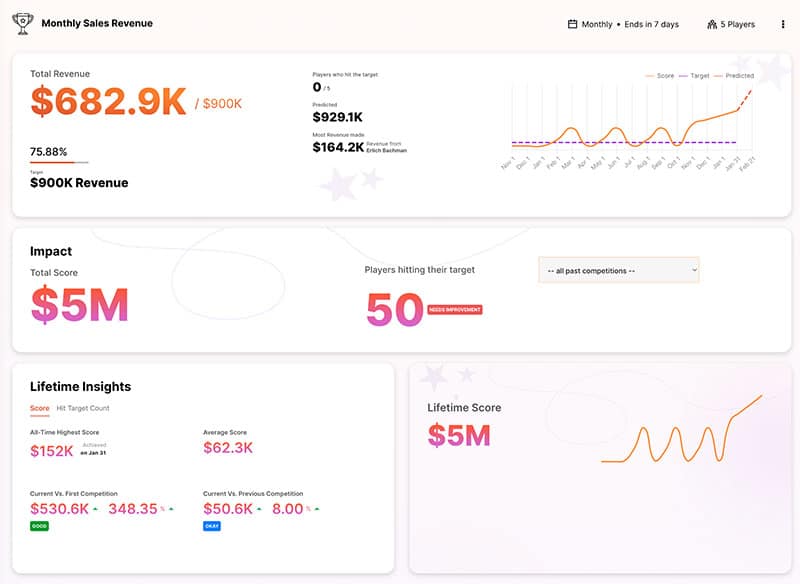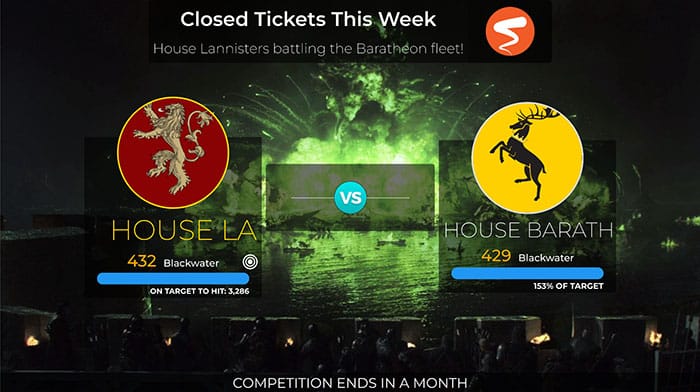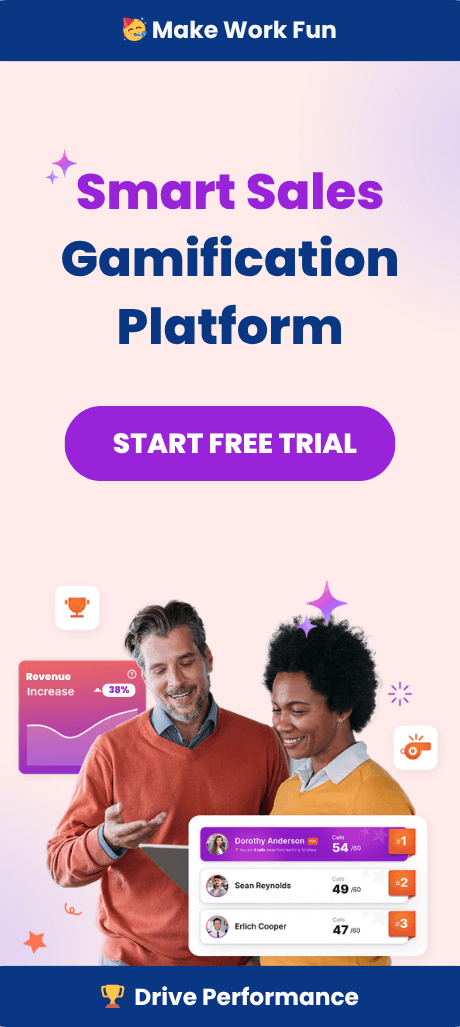Welcome to the era of smarter, faster, and more engaging sales performance management. As we enter 2025, gamification is rapidly evolving, and staying ahead is crucial for team success. Spinify leads the way in transforming sales through strategic gamification, enhancing team dynamics and productivity. In 2025, personalized experiences are key, with AI-driven insights tailoring strategies to individual strengths. This approach boosts engagement, identifies potential leaders, and integrates real-time feedback for continuous improvement. As gamification extends to customer interactions, it elevates satisfaction and brand loyalty, while promoting eco-friendly practices. Embrace these trends to drive growth and achieve success in 2025 and beyond.
1. AI Coaching: Personalized Motivation at Scale
In 2025, sales leaders no longer need to guess what their teams need to succeed. AI-driven coaching platforms, like Spinify AI Coaching Agent, are using advanced analytics to deliver real-time, personalized feedback.
- Why it matters: Your top performers get actionable insights to push harder, while struggling reps receive guidance tailored to their challenges.
- What you can do: Incorporate AI coaching tools to create a culture of continuous improvement, ensuring no one falls behind.
As AI coaching becomes increasingly sophisticated, these platforms are not only providing feedback but also predicting future performance trends. By analyzing past data and current performance metrics, AI can anticipate potential hurdles and suggest proactive strategies to overcome them. This foresight allows teams to prepare for challenges before they arise, ensuring sustained progress and growth.
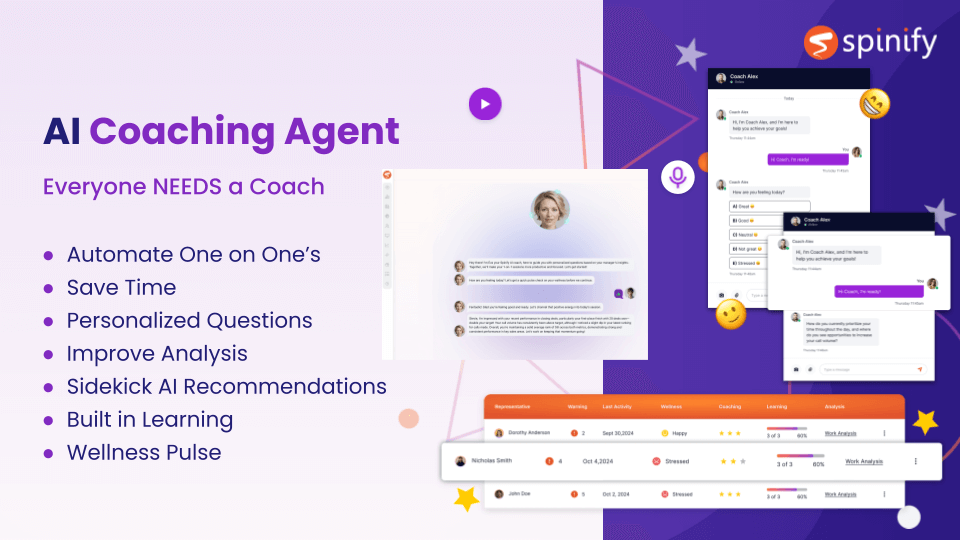
Moreover, AI coaching tools are fostering a more inclusive environment by recognizing diverse learning styles and adjusting their feedback accordingly. This personalized approach ensures that every team member feels valued and supported, leading to higher morale and a stronger commitment to team goals.
Effortless Integration and Inclusive Coaching
In addition, the integration of AI coaching with other technologies is creating a seamless experience for users. For example, AI tools can sync with CRM systems to provide context-specific advice during sales calls or customer interactions. This real-time support empowers sales representatives to make informed decisions on the spot, enhancing customer satisfaction and driving better results.

Furthermore, AI coaching is breaking down geographical barriers, enabling remote teams to access the same level of support and guidance as their in-office counterparts. This democratization of coaching resources ensures that all team members, regardless of location, have the opportunity to excel and contribute to the organization’s success.
As companies continue to embrace AI-driven coaching, the emphasis on continuous learning and development will become a cornerstone of organizational culture. By investing in these cutting-edge tools, businesses can unlock their team’s full potential and achieve unparalleled success in the competitive landscape of 2025.
2. Dynamic Accolades: Recognition That Resonates
Celebrating wins isn’t new, but how you do it matters more than ever. Dynamic Accolades bring a fresh approach to recognizing success.
What’s different?
Accolades are now customizable, adapting to individual, team, or organizational goals. Think of them as a “living” form of recognition that evolves with your team’s performance. This adaptability ensures that recognition is always relevant and meaningful, reflecting the unique contributions of each team member. By tailoring accolades to align with specific achievements, companies can foster a culture of appreciation that resonates with employees on a personal level.
The impact:
Teams feel genuinely seen and appreciated, boosting morale and driving motivation. When team members receive recognition that acknowledges their specific efforts and accomplishments, it enhances their sense of belonging and purpose within the organization.
This, in turn, leads to increased engagement and productivity, as employees are motivated to continue performing at their best. Moreover, dynamic accolades can strengthen team cohesion by highlighting collaborative successes, encouraging a spirit of teamwork and mutual support. As organizations strive to retain top talent and foster a positive work environment, implementing dynamic accolades can be a powerful tool in achieving these goals.
3. Micro-Gamification: Celebrating Small Wins
Why wait for major milestones? Micro-gamification emphasizes celebrating incremental achievements to keep teams motivated and engaged. This approach creates a consistent rhythm of recognition and rewards, ensuring that every small step towards progress is acknowledged and valued. By focusing on these micro-achievements, companies can foster a culture of continuous improvement and innovation.
In 2025, the landscape of team productivity is shifting towards more personalized and frequent recognition methods. Leveraging technology and data-driven insights, organizations are now able to track and celebrate even the smallest victories in real time. This not only boosts individual morale but also enhances team cohesion and collaboration. As teams work towards collective goals, the momentum generated by micro-gamification can lead to significant breakthroughs and innovations.

Moreover, micro-gamification aligns with the emerging trends of personalized employee experiences and agile work environments. By integrating micro-goals into daily workflows, companies can create a more engaging and flexible work culture that adapts to the unique needs and preferences of each team member. This adaptability is crucial in maintaining high levels of motivation and productivity in a rapidly changing business landscape.
Additionally, micro-gamification can serve as a powerful tool for identifying and nurturing potential leaders within the organization. By recognizing and rewarding consistent performance and innovative problem-solving, companies can spotlight individuals who demonstrate leadership qualities and drive team success. This proactive approach to talent development ensures a robust pipeline of future leaders ready to take on new challenges and drive organizational growth.
Top ideas:
- Set daily challenges, such as most customer interactions before noon.
- Reward weekly streaks for consistent performance.
- Offer surprise bonuses for innovative problem-solving.
Why it works: Frequent, smaller rewards maintain energy levels and prevent burnout. Celebrating small wins reinforces positive behaviors and fosters a culture of steady progress.
4. Data-Driven Motivation to Drive Growth
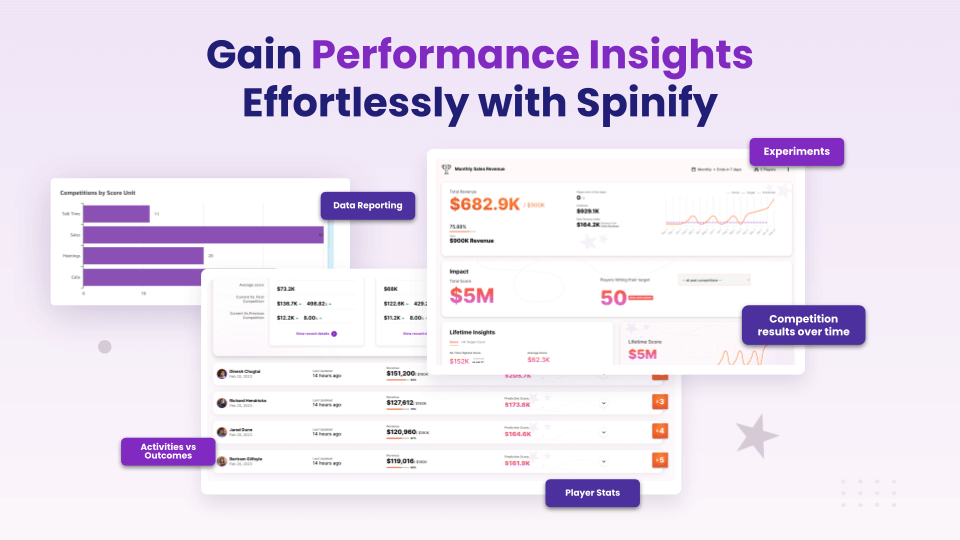
Data is the fuel for better decisions. In 2025, gamification platforms are using enhanced analytics and performance heatmaps to give sales leaders deeper insights into what’s working.
Key trends include:
- Identifying patterns in team performance, enabling leaders to pinpoint areas where interventions are needed and to recognize high-achieving individuals or teams who consistently exceed expectations. This level of insight fosters a more targeted approach to performance management, ensuring that resources are allocated efficiently and effectively.
- Uncovering hidden barriers to success, such as workflow bottlenecks or communication breakdowns, which can impede progress. By addressing these obstacles, companies can streamline operations and enhance overall productivity. This proactive problem-solving approach not only boosts team morale but also contributes to a more harmonious and efficient working environment.
- Providing actionable data that leads to faster course corrections. With real-time access to performance metrics, sales leaders can swiftly adjust strategies to align with changing market conditions or team dynamics. This agility is crucial in maintaining a competitive edge and ensuring that teams remain focused and motivated.
Pro tip:
Use these insights to create dynamic leaderboards and challenges that address specific team needs. By tailoring gamification elements to reflect the unique strengths and weaknesses of your team, you can foster a more engaging and rewarding experience for all members. This personalized approach not only enhances motivation but also drives sustained growth and success in a rapidly evolving business landscape.
Hybrid Work Optimization: Balancing Flexibility and Productivity
As hybrid work becomes the norm, optimizing performance management for a distributed workforce is a critical trend in 2025. Companies are rethinking how they support and evaluate employees who split their time between remote and in-office environments. This shift presents unique challenges and opportunities that require innovative solutions to ensure seamless collaboration and productivity across diverse work settings.
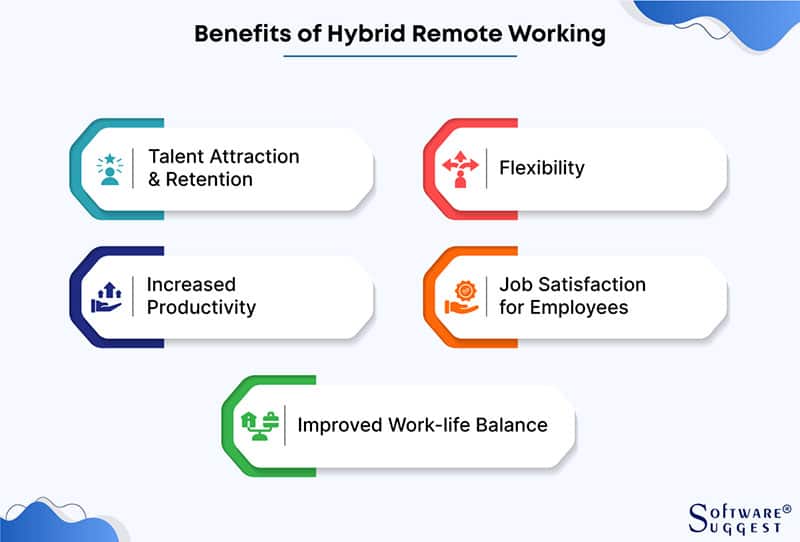
One of the key aspects of hybrid work optimization is the implementation of advanced technology solutions that facilitate communication and collaboration. Companies are increasingly investing in cloud-based platforms and virtual collaboration tools that allow teams to work together effectively, regardless of their physical location. These tools not only enable real-time communication but also support project management and file sharing, ensuring that all team members have access to the information they need to perform their roles efficiently.
In addition to technology, organizations are also focusing on creating flexible work policies that accommodate the varying needs and preferences of their employees. By offering options such as flexible work hours and remote work arrangements, companies can attract and retain top talent while promoting a healthy work-life balance. This flexibility is particularly important in a hybrid work environment, where employees may face different challenges depending on their location and personal circumstances.
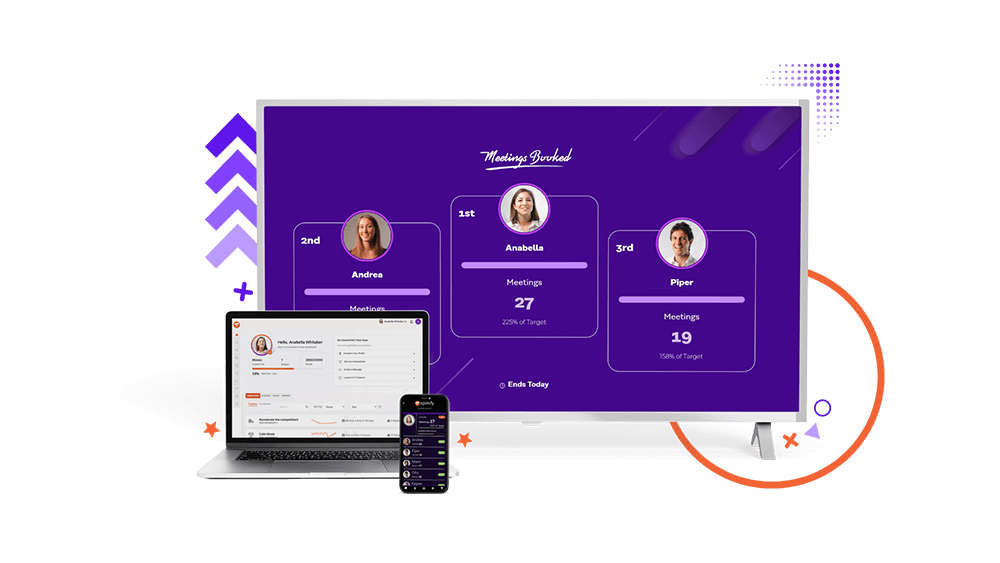
Moreover, hybrid work optimization involves redefining performance metrics to reflect the unique dynamics of a distributed workforce. Traditional metrics that focus solely on in-office performance may not accurately capture the contributions of remote employees. As such, companies are developing new performance evaluation frameworks that consider factors such as output quality, collaboration, and adaptability. By aligning performance metrics with the realities of hybrid work, organizations can ensure that all employees are fairly assessed and recognized for their contributions.
Ultimately, the success of hybrid work optimization hinges on the ability of organizations to create an inclusive and supportive work culture that values the contributions of all employees, regardless of their location. By fostering a sense of belonging and connection, companies can ensure that their hybrid workforce remains engaged, motivated, and aligned with organizational goals. As the trend towards hybrid work continues to grow, businesses that prioritize performance management optimization will be well-positioned to thrive in the evolving workplace landscape of 2025 and beyond.
Top ideas:
- Implement technology that tracks productivity without being intrusive.
- Use virtual collaboration tools to foster a sense of team unity.
- Create flexible performance metrics that consider varying work conditions.
Why it matters: Hybrid work optimization ensures that employees remain engaged and productive, regardless of location. By addressing the unique challenges of a hybrid workforce, companies can build inclusive strategies that support everyone’s success.
6. Collaborative Gamification: Teamwork Drives Results
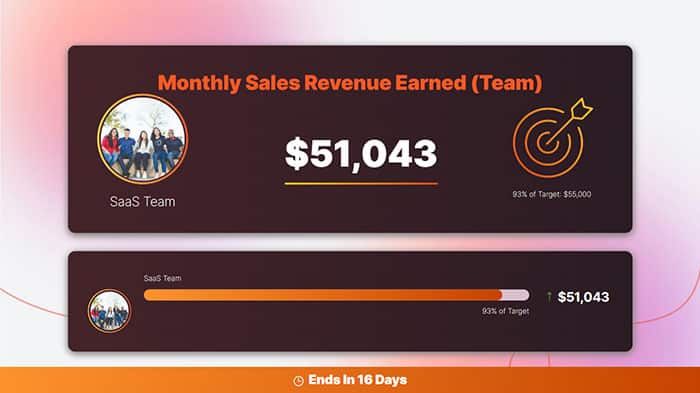
Gamification is shifting from individual competition to collaborative challenges that encourage teamwork.
How it looks:
- Team-based goals where everyone contributes to the win. By setting collective targets, team members are motivated to work together, leveraging each other’s strengths and compensating for weaknesses. This approach not only fosters a sense of unity but also ensures that every member feels integral to the team’s success.
- Group recognition events that celebrate collective achievements. Recognizing the accomplishments of the team as a whole, rather than just individuals, reinforces the value of collaboration. These events can range from team lunches and outings to formal awards ceremonies, providing opportunities for team bonding and celebrating shared successes.
The result:
Stronger team cohesion and a shared sense of purpose. As teams work towards common goals, they develop a deeper understanding and appreciation for each other’s roles and contributions. This shared journey not only strengthens relationships within the team but also aligns individual efforts with organizational objectives. In the competitive landscape of 2025, where adaptability and innovation are key, collaborative gamification empowers teams to tackle challenges more effectively and drive sustained growth.
7. Seamless Integrations: One Platform to Rule Them All
In 2025, sales teams are demanding platforms that integrate effortlessly with their existing tools. From CRMs like Salesforce to communication apps like Slack, seamless integration is a must.
- What to look for: Platforms like Spinify that work across your tech stack to minimize friction and maximize efficiency.
Seamless integrations are more than just a convenience; they are a strategic necessity in today’s fast-paced business environment. As companies increasingly rely on a diverse array of digital tools to manage operations, the ability to unify these systems into a cohesive platform becomes paramount. This integration not only streamlines workflows but also enhances data accuracy and accessibility, providing sales teams with a comprehensive view of their performance metrics.
Moreover, seamless integrations facilitate better collaboration across departments. By ensuring that all team members have access to the same information, organizations can foster a more cohesive and informed workforce. This is particularly important in sales environments, where timely and accurate data can be the difference between closing a deal and missing an opportunity.
In addition to improving internal processes, seamless integrations can also enhance customer interactions. By consolidating customer data from various touchpoints, sales representatives can gain deeper insights into customer preferences and behaviors. This enables them to tailor their approaches and deliver more personalized and impactful experiences, ultimately driving customer satisfaction and loyalty.
Furthermore, as remote work becomes increasingly prevalent, seamless integrations play a critical role in maintaining productivity and engagement. By providing remote teams with the tools they need to collaborate effectively, organizations can ensure that all employees remain connected and aligned with company objectives, regardless of their physical location.
The demand for seamless integrations will continue to grow as companies seek to optimize their operations and drive growth. By investing in platforms that offer robust integration capabilities, organizations can unlock new levels of efficiency, collaboration, and customer engagement, setting the stage for sustained success in 2025 and beyond.
8. Rewards that Go Beyond the Ordinary: Emerging Trends
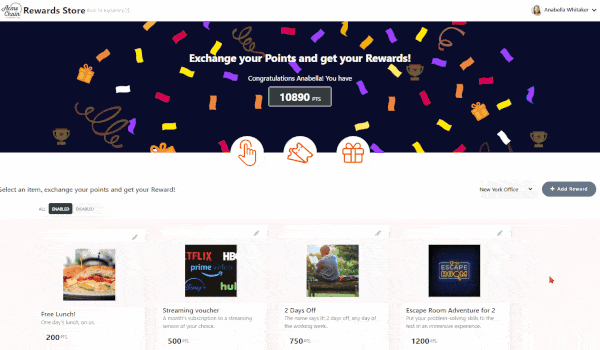
Gift cards and trophies are great, but today’s teams want rewards that matter. Flexible, meaningful rewards are taking center stage.
Top ideas:
- Experiences like trips or events. These can be transformative, offering team members a chance to unwind, bond, and create lasting memories. By providing experiences that align with personal interests, companies can enhance employee satisfaction and loyalty.
- Wellness perks such as gym memberships. In a world increasingly focused on health and well-being, offering wellness rewards can boost morale and productivity. These perks not only show that the company cares about its employees’ health but also encourage a balanced lifestyle, leading to happier and more engaged team members.
- Personalized rewards based on individual preferences. Understanding what truly motivates each team member is crucial. By offering personalized rewards, companies can demonstrate appreciation in a way that resonates personally with employees, fostering a stronger connection to the organization. This approach can include everything from bespoke gifts to tailored professional development opportunities, ensuring that each reward is both meaningful and impactful.
As the workplace continues to evolve, so too do the expectations of employees regarding recognition and rewards. In 2025, the emphasis is on creating a reward system that reflects the diverse needs and aspirations of the workforce. By moving beyond traditional rewards and embracing innovative, personalized options, companies can drive engagement and motivation, ultimately leading to enhanced performance and success.
9. Sustainability Gamification: Purpose Meets Performance
With employees increasingly valuing purpose-driven work, sustainability challenges are becoming a popular gamification feature.
Examples:
- Eco-friendly sales challenges like minimizing paper usage or meeting virtually. These initiatives not only contribute to environmental conservation but also promote cost savings and operational efficiency. By encouraging teams to adopt sustainable practices, companies can reduce their carbon footprint and align with global sustainability goals. Moreover, these challenges can inspire employees to innovate and find creative solutions to reduce waste and resource consumption, enhancing the organization’s reputation as a responsible corporate citizen.
- Company donations tied to team performance milestones. This approach not only motivates teams to achieve their targets but also fosters a sense of social responsibility and community involvement. By linking performance with charitable contributions, companies can create a win-win scenario where both business objectives and societal goals are met. This strategy can also enhance employee engagement and satisfaction, as team members feel proud to be part of an organization that prioritizes giving back to the community.
Why it matters:
Purpose-driven gamification creates a deeper connection between your team and your company’s values. By integrating sustainability into gamification strategies, companies can reinforce their commitment to ethical practices and inspire employees to contribute to a greater cause. This alignment between personal and organizational values can lead to higher levels of employee engagement, retention, and motivation. Additionally, purpose-driven gamification can attract talent who prioritize working for companies with strong ethical and environmental values, further strengthening the organization’s workforce. As the demand for sustainable business practices continues to rise, embracing sustainability gamification can position companies as leaders in both innovation and corporate responsibility.
10. Real-Time Feedback Loops Are Increasingly Important
Long gone are the days of waiting for end-of-month performance reviews. Gamification now includes instant feedback loops to keep teams informed and motivated.
Benefits include:
- Immediate recognition for hitting targets. This instant acknowledgment not only boosts morale but also reinforces positive behavior, encouraging team members to consistently strive for excellence. By celebrating achievements as they happen, companies can create a vibrant and dynamic work environment where success is continually recognized and rewarded.
- Faster course corrections for underperforming reps. With real-time feedback, managers can identify issues as they arise and provide timely support and guidance to help team members get back on track. This proactive approach minimizes the impact of underperformance and ensures that teams remain focused and aligned with organizational goals.
- A culture of transparency and accountability. Real-time feedback fosters open communication and trust, as team members receive continuous updates on their progress and areas for improvement. This transparency encourages a sense of ownership and responsibility, empowering employees to take charge of their development and contribute to the team’s success. Moreover, by embedding accountability into the organizational culture, companies can drive a higher level of engagement and commitment from their teams.
Measuring Success: Evaluating the Impact of Gamification

Measuring the success of gamification initiatives is crucial for understanding their impact on sales performance and revenue growth. In the fashion industry, companies can use a variety of metrics to evaluate the effectiveness of gamification, including sales revenue, customer engagement, and employee motivation.
To measure the impact of gamification, companies should establish clear goals and objectives, track key performance indicators (KPIs), and conduct regular evaluations. For instance, companies can use metrics such as sales growth, customer acquisition costs, and employee retention rates to evaluate the effectiveness of gamification initiatives.

In addition, companies can use tools like AI-powered analytics to gain deeper insights into the impact of gamification on sales performance. By leveraging these tools, fashion companies can refine their gamification strategies and optimize their sales performance.
For example, companies like Ralph Lauren and Dries Van Noten have successfully used gamification to drive sales growth and enhance customer engagement. By leveraging AI-powered analytics, these companies have been able to refine their gamification strategies and stay ahead of the competition in the fashion industry.
The Importance of Team Engagement

Team engagement is a crucial aspect of any organization’s success. When team members are engaged, they are more productive, motivated, and committed to achieving the company’s goals. In the context of sales teams, engagement is particularly important, as it can directly impact sales performance and revenue growth. According to a study, teams with high engagement levels are 21% more profitable than those with low engagement levels.
In the fashion industry, team engagement is essential for staying on top of emerging trends and adapting to changing consumer preferences. For instance, the rise of boho chic and wide-leg jeans requires sales teams to be knowledgeable about these trends and able to effectively communicate their value to customers. By fostering a culture of engagement, fashion companies can ensure that their sales teams are equipped to drive growth and stay ahead of the competition.
Building a High-Performing Sales Team
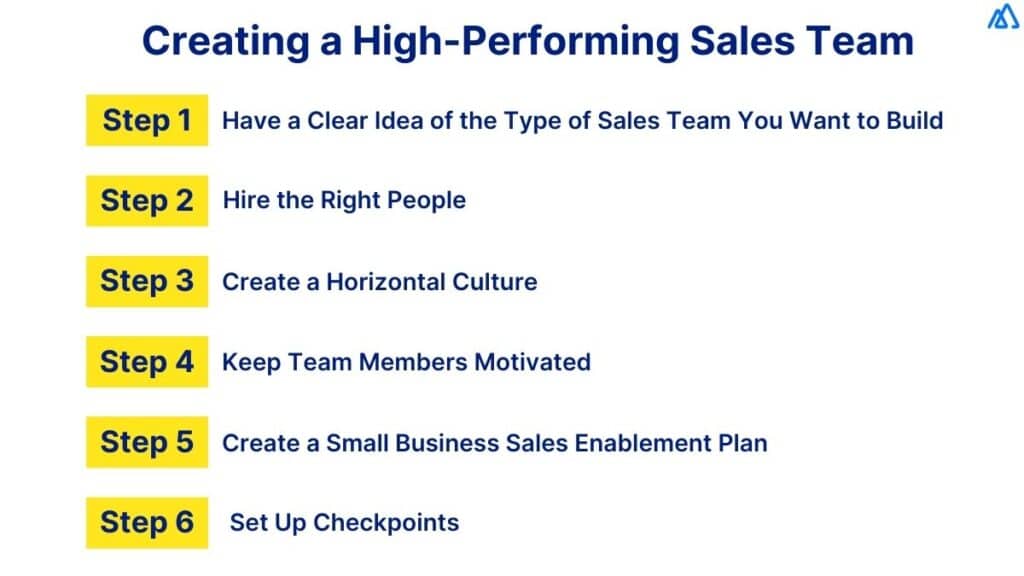
Building a high-performing sales team requires a combination of effective leadership, strategic planning, and ongoing training and development. In the fashion industry, sales teams must be able to navigate complex product lines, stay up-to-date on the latest trends, and provide exceptional customer service.
To build a high-performing sales team, fashion companies should focus on recruiting and retaining top talent, providing ongoing training and development opportunities, and fostering a culture of collaboration and open communication. Additionally, companies should leverage technology, such as AI-powered sales tools, to enhance sales performance and drive growth.
For example, companies like Tory Burch and Acne Studios have successfully built high-performing sales teams by focusing on these key areas. By investing in their sales teams, these companies have been able to drive revenue growth and stay ahead of the competition in the fashion industry.
Make 2025 Your Best Year Yet with Spinify: Learnings from the Previous Year
The future of sales gamification is here, and it’s brimming with opportunities to elevate your team. Whether you’re leveraging AI-powered coaching, experimenting with dynamic challenges, or rethinking how you reward performance, staying ahead of the trends is key to success.
In 2025, the landscape of sales gamification is evolving rapidly, driven by technological advancements and a deeper understanding of team dynamics. Companies are increasingly recognizing the importance of personalized and engaging gamification strategies that cater to the unique needs of their teams. By utilizing AI-driven insights and data analytics, organizations can tailor their gamification efforts to align with individual strengths and preferences, fostering a more inclusive and motivating environment.
Moreover, the integration of gamification with other emerging technologies, such as virtual reality and augmented reality, is opening up new possibilities for immersive and interactive experiences. These technologies enable teams to engage with gamified elements in innovative ways, enhancing learning and skill development while keeping motivation levels high.
As the focus shifts towards sustainability and social responsibility, gamification is also being used to promote eco-friendly practices and community engagement. By incorporating sustainability challenges and purpose-driven initiatives into gamification strategies, companies can inspire employees to contribute to a greater cause while achieving business objectives.
The future of sales gamification is not just about driving performance; it’s about creating a holistic approach that supports personal and professional growth. By embracing these trends and leveraging the latest tools, organizations can cultivate a high-performing, motivated, and engaged workforce that is well-equipped to navigate the challenges of 2025 and beyond.
At Spinify, we’re committed to helping you unlock your team’s full potential with cutting-edge tools and strategies.

